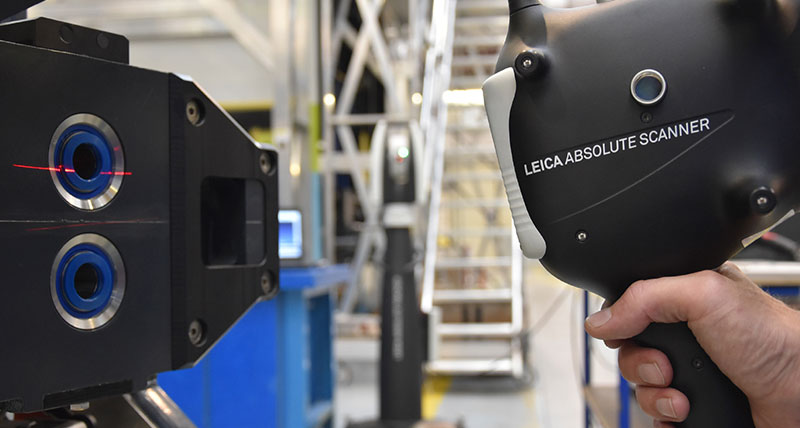Laser Tracking
Unrivalled accuracy and long-range capability for 3D position encoding

Laser Tracking Method
The operation of a laser tracker is easy to understand: It measures two angles and a distance. The tracker sends a laser beam to a retro-reflective target held against the object to be measured. Light reflected off the target retraces its path, re-entering the tracker at the same position it left. Retro-reflective targets vary, but the most popular is the spherically mounted retro-reflector (SMR). As light re-enters the tracker, some of it goes to a distance meter that measures the distance from the tracker to the SMR. The distance meter may be either of two types, interferometer or absolute distance meter (ADM).
Advantages
Ideal for measuring medium to large parts and providing an ultra-portable solution for large-scale inspection and assembly applications, industrial laser trackers have become an essential piece of metrology equipment in all kinds of industries. Laser trackers offer accurate 3D measurement to reflectors, while the addition of six-degrees of freedom (6DoF) functionality enables the use of handheld probes, laser scanners and machine control solutions.
From surface inspections in the automotive body shop to large-volume measurements in energy industry installations, or metrology-guided automated aircraft assembly systems, the speed, accuracy and portability of laser tracker technology delivers data, when and where it is needed.
